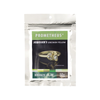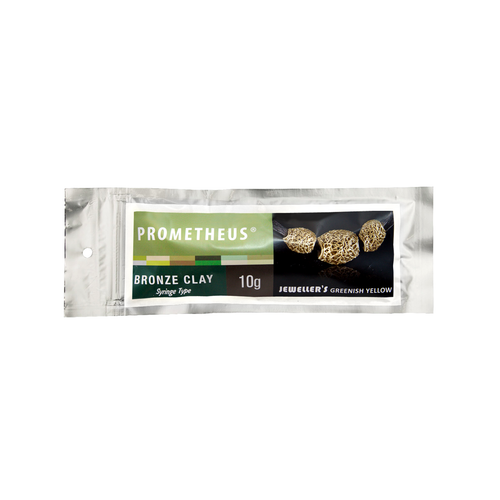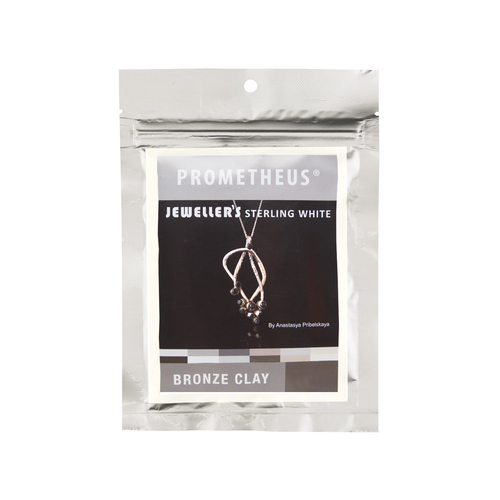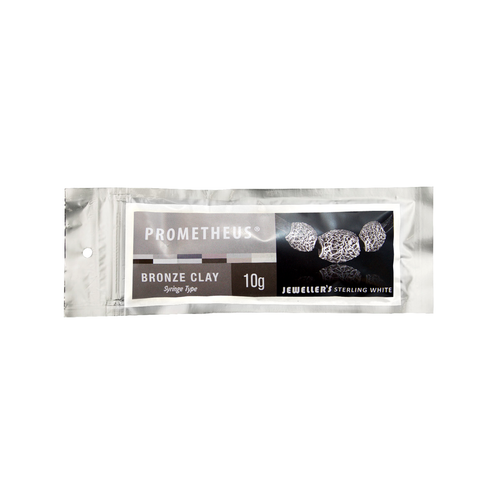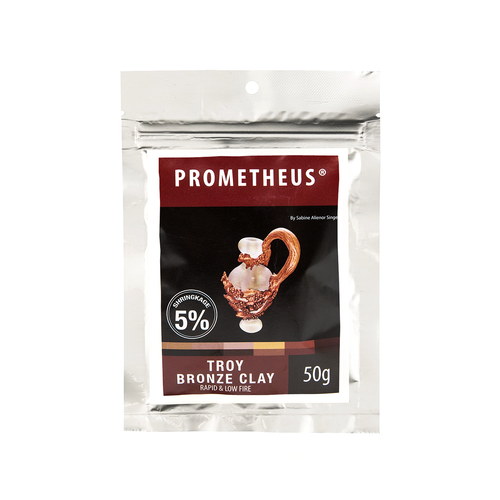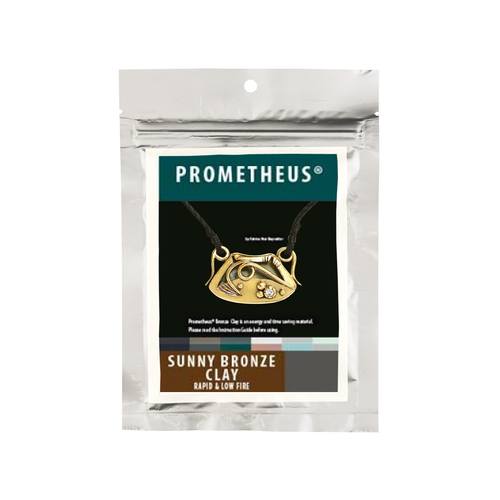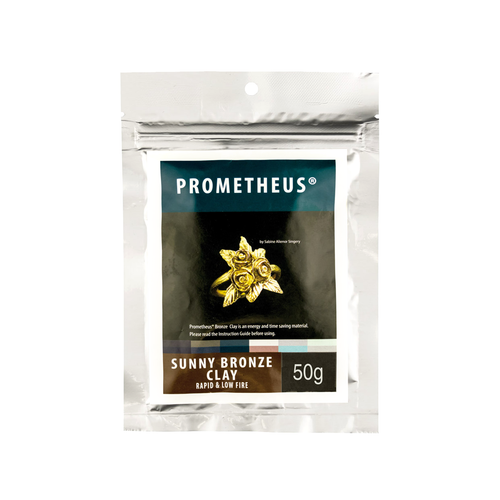Product Description
Prometheus® Jeweller's Greenish Yellow Bronze Clay is a claylike material which turns into pure, solid bronze when fired in a kiln. It is a mixture of micron sized bronze powder, water and organic binder. It can be formed by hand, rolled into a sheet or a rope. It can be moulded, textured, even turned on a potter's wheel. Prometheus® Bronze Clay can be fired with most lab-created gemstones (cubic zirconias), pre-tested natural stones, glass beads, ceramic and porcelain.
When the clay is fired in a kiln, the organic binder evaporates and burns away and you’re left with pure, solid bronze. Brush it, if needed pickle it to remove any fire-scale and finally polish.
You can create unique jewellery, ornaments, hollow ware, statutes, sculptures and many other decorative objects. Any thing you create with Prometheus® Bronze Clay is a piece of art. Combine it with your imagination and let your fingers do the rest!
This clay shrinks between 13%-14% based on firing methods.
HOW TO FIRE:
Prometheus® Jeweller's Greenish Yellow Bronze Clay has a 2-stage firing:
- Place your dried piece(s) onto stainless steel mesh, and into a cold kiln
- Wait for the kiln to heat up to 500°C/932°F and fire for 15 minutes
- Once finished, remove the piece and leave to cool on a heatproof surface
- Preheat your kiln to 800°C / 1470°F
- Pour 3cm of activated carbon into a steel container, and place pieces at least 1.5cm apart
- Thoroughly cover with activated carbon, and place steel container inside the kiln
- Wait for the kiln to heat back up to temperature, and fire for 1 hour
- Once finished, remove the piece and leave to cool on a heatproof surface
Prometheus® Jeweller's Greenish Yellow Bronze Clay can be combined with Prometheus Bronze Clay, Prometheus Copper Clay, Prometheus Sunny Bronze, Prometheus Sterling White, and Prometheus Light Yellow and fired with the same firing schedule.
Available in 20g, 50g, 100g.
* Also available in 10g syringe *
* These 20gm packets of clay are a little older but still perfectly usable! The clay may require some reconstituting, there are a couple of ways this can be done including poking little holes in the clay and adding some water until the clay is pliable.







